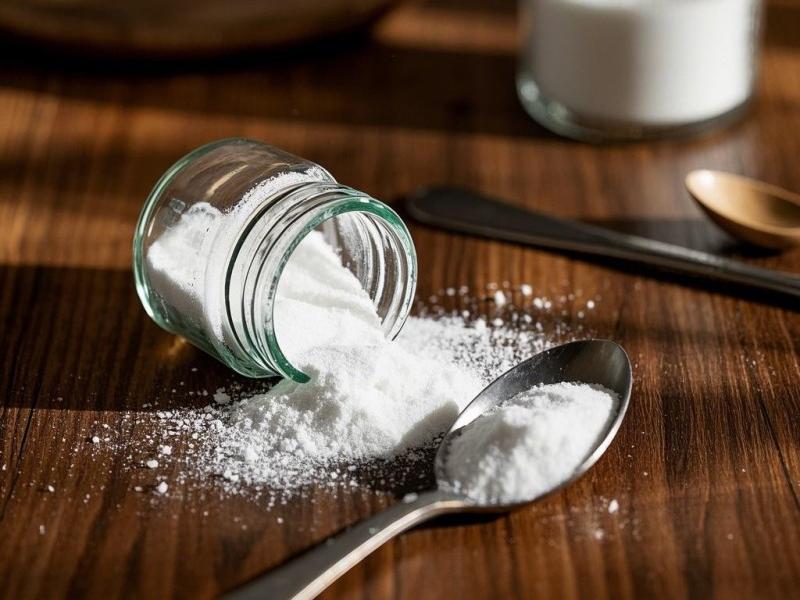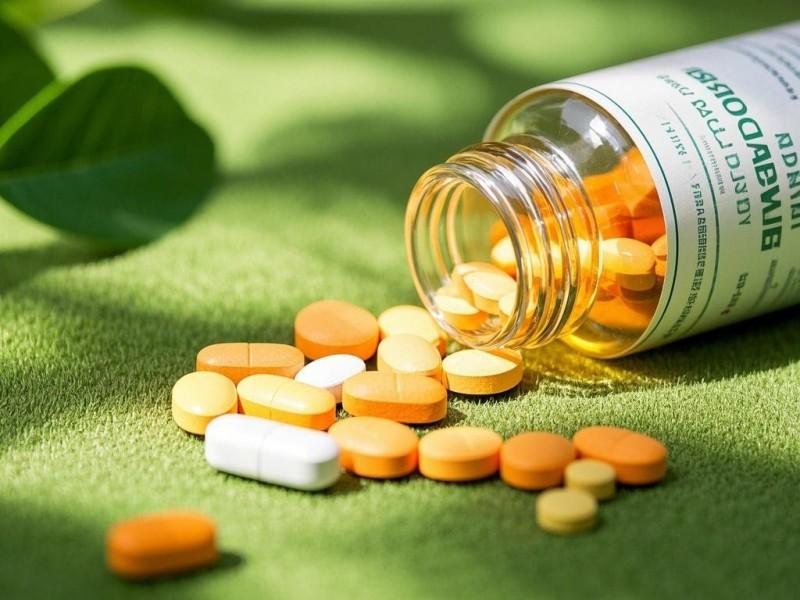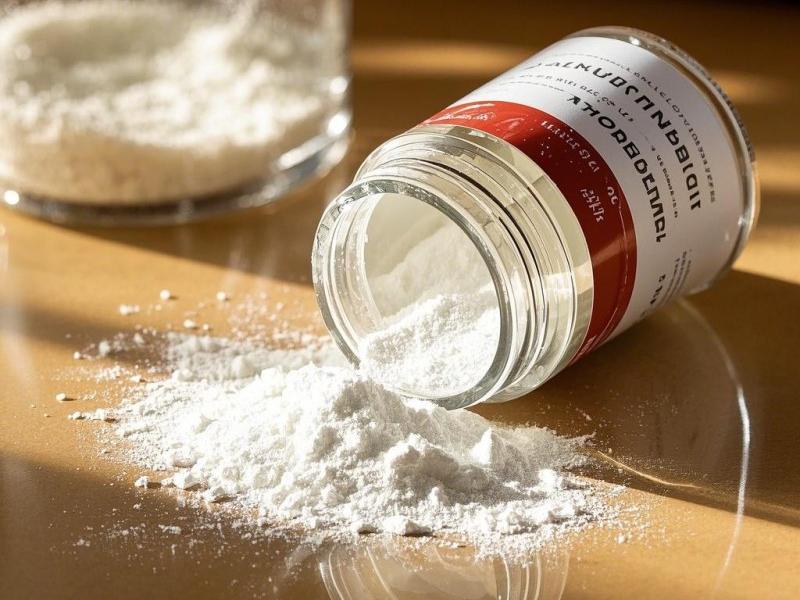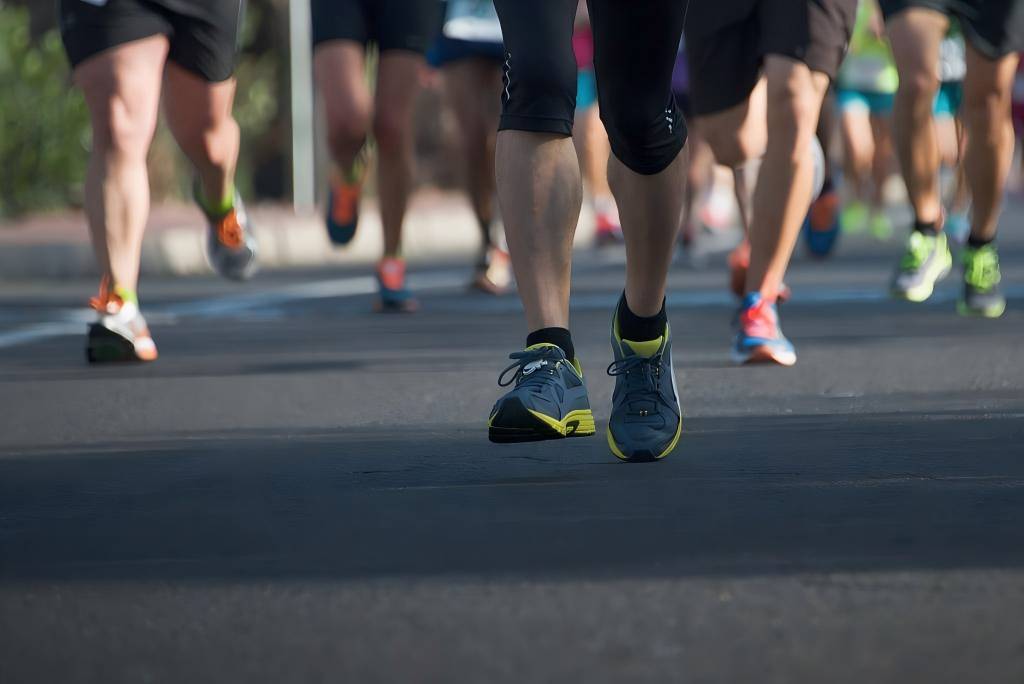How to Extract and Test Octacosanol?
Since 1937, when foreign scholars extracted a straight-chain alcohol with 28 carbon atoms from wheat germ oil, it has been found that it has therapeutic effects on human reproductive disorders. Since then, scientists from various countries have begun to devote themselves to research related to octacosanol. Octacosanol (1-octacosanol or n-octacosanol), also known as montanylalcohol, is a naturally occurring higher aliphatic alcohol[1].
Octacosanol was first found to exist in rice germ and wheat germ. With the improvement and deepening of research methods, it was found that it is widely distributed in the epidermis and internal organs of animals, the waxy substances secreted by insects, and the lipids in the roots, stems, leaves, shells, and seeds of plants, either in bound form (as wax esters) or free. After purification, it can be used as an additive in medicines and health foods [2]. The structural formula of octacosanol is shown in Figure 1, with a relative molecular mass of 410. It is a white powder or scaly crystal with a melting point of 81°C to 83°C. It is soluble in organic solvents such as hot ethanol, ether, benzene, toluene, chloroform, dichloromethane, and petroleum ether, but insoluble in water[3]. Octacosanol has the effect of improving human physiological functions, which are mainly manifested as: improving endurance and energy; improving reaction sensitivity; improving stress resistance; relieving muscle pain; improving myocardial function; lowering systolic blood pressure; and increasing the body's metabolic rate [4-9].
In the United States, Japan and other countries, octacosanol is widely used as a natural health food additive and broad-spectrum natural medicine in sports drinks, natural health products, pharmaceuticals and cosmetics [10-12]. In recent years, the preparation of octacosanol and the development of related products have gradually become a research hotspot for domestic scientific researchers.
1 Extraction of octacosanol
Free octacosanol is rarely found in natural plants and animals, and most of it exists in the form of fatty alcohol esters. The main methods used to extract octacosanol from natural products include reduction, hydrolysis, and solvent methods. In recent years, emerging supercritical carbon dioxide extraction technology, molecular distillation technology, and ultrasonic-assisted extraction technology have also been applied in the extraction of octacosanol.
1.1 Reduction method
The reduction method is used to prepare fatty alcohols by reducing long-chain fatty acids with low-carbon alcohols. However, it is rare to report the use of fatty acids to reduce high-carbon alcohols. Zhang Xiangnian et al. [13] used beeswax as a raw material, added LiAlH to ether, and reduced it at 70 °C to 80 °C for 2.5 h to obtain a mixture of higher alcohols. After purification by molecular distillation, the recovery rate of higher alcohols reached 96%, of which the content of octacosanol was about 16.7%.
1.2 Hydrolysis
The method of producing long-chain fatty alcohols by hydrolysis was reported in the literature in the 1950s. The specific steps are: saponification of the cetane with an alkali-containing ethanol solution, distillation to remove the ethanol, and the residue is a mixture of fatty acids (or fatty salts) and free alcohols. Then, a large amount of water is added to the reaction system, heated and refined, and then adding CaC12 to precipitate it, you can obtain a mixture of alcohols including cetyl alcohol. In China, there have been many reports on the research of extracting hexacosanol from rice bran wax using the hydrolysis method[14], and it has already been put into production.
1.3 Solvent method
In the solvent extraction method, rice bran wax and beeswax are first saponified in an alcohol phase, then repeatedly extracted with several solvents, and finally separated by column chromatography or distillation. To increase purity, multiple chromatographies and distillations are often required, and finally solvent crystallization is used to obtain a high-purity product. Commonly used solvents include acetone, butanone, methanol, ethanol, hexane, heptane, chloroform, benzene and other organic solvents [13,14].
1.4 Supercritical carbon dioxide extraction
Supercritical fluid extraction is used. After the raw material is separated in two stages, a product with high purity (80%–90%) of octacosanol can be obtained, and there are no problems such as solvent residue, which is conducive to improving product quality. Huo Yanrong et al. [15] established a process model for the extraction of octacosanol from sugarcane bagasse using supercritical CO2 by response surface methodology (RSM), The maximum extraction yield of octacosanol was 7. 5855 mg/g. According to the latest report in 2012, the yield of octacosanol obtained by supercritical extraction from sugarcane residue is higher than that obtained by hot ethanol solvent extraction [16].
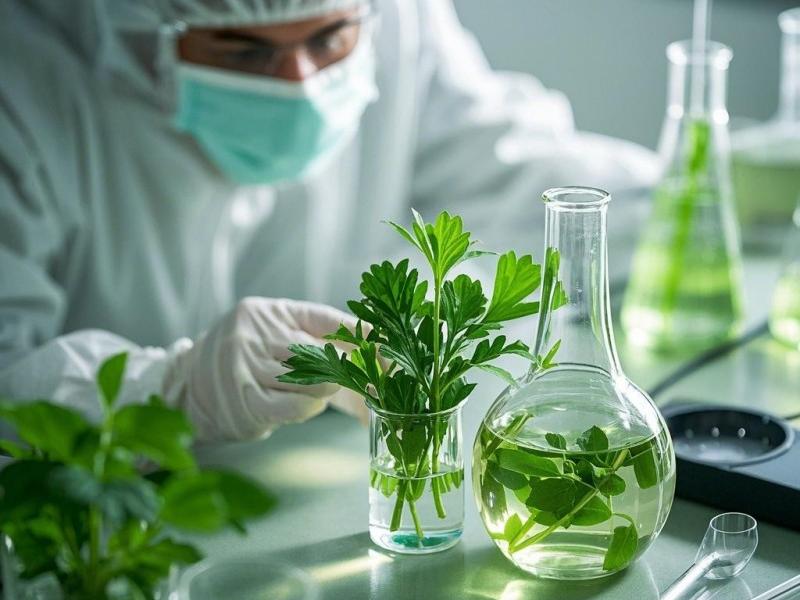
This method is simple and has a high yield, but supercritical extraction requires relatively high-quality equipment and is not yet widely used in the extraction of octacosanol.
1.5 Molecular distillation
The advantages of molecular distillation are that the resulting mixture of higher aliphatic primary alcohols has a high octacosanol content, the product has a wide range of uses, the separation and purification process is relatively simple, the recovery rate is relatively high, and the entire process is environmentally friendly. Liu Fangbo et al. [17] used molecular distillation technology to improve the separation efficiency of octacosanol. A thin-film evaporator was used at a temperature of 170 °C, and a molecular distiller was used at a temperature of 210 °C to obtain a final octacosanol product with a purity of 52.6%.
The application of molecular distillation technology to the extraction and purification of octacosanol can achieve continuous production of octacosanol, improve separation efficiency, shorten separation time, and improve product quality [18]. Xu Songlin [19] studied the method of extracting a mixture of higher primary fatty alcohols from beeswax and purifying the mixture. The method uses saponified beeswax as the raw material, and 28-methyl alcohol is obtained by molecular distillation. The key to the method is to use the residue from the previous distillation step as the raw material for the next distillation step, thereby repeating the distillation process. Some researchers also use insect white wax as a raw material and choose the alcohol-phase saponification method to prepare long-chain fatty alcohols. The multi-stage molecular distillation technology is used to purify the product, which makes the purity of octacosanol reach about 80.6%, which is significantly better than the conventional vacuum distillation method.
1.6 Ultrasonic extraction
Under ultrasonic enhanced extraction conditions, high-carbon fatty alcohols can be extracted from refined bran wax by an ester exchange process. Relevant research data show that the optimal transesterification process parameters are ultrasonic power of 200 W, reaction temperature of 60 °C, a wax alcohol ratio of 1:10, reaction time of 6 h, and catalyst dosage of 1.5%. The yield of octacosanol is about 14.7% [20].
2. Detection method of octacosanol
Gas chromatography is used for qualitative and quantitative analysis, and can be used to determine the content of octacosanol in mixed higher fatty alcohols or preparations [2,21,22]. It has been shown that simultaneous detection of octacosanol and tricosanol can be achieved using gas chromatography [23].
Octacosanol is a higher fatty alcohol. Zhang Jing et al. [24] used gas chromatography-hydrogen flame ionization detection to quantitatively determine the content of octacosanol in health food. The sample was first extracted with a mixed solution, and then the Silyl-991 derivatization reagent was used to derivatize and purify the extract. Then hexane was used as the extraction solution, water was added to remove impurities, Finally, the extract was separated and detected using a gas chromatograph with a capillary column and a hydrogen flame ionization detector. Octacosanol and impurities were well separated. In the linear range of 0.32~160.00 μg/mL, the correlation coefficient R2=0.9989, and the minimum detection amount was 0.57 ng. When the concentration is added to 3.20~32.00 mg/kg, the method recovery rate ranges from 83.13% to 100.63%. The method is simple to operate, has high sensitivity, good reproducibility and selectivity, and good separation.
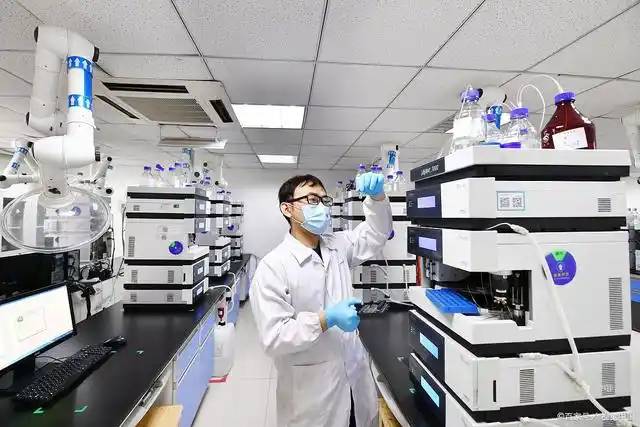
When the content of higher aliphatic alcohols in mixed aliphatic alcohols is too low, capillary gas chromatography can be used for analysis to achieve better separation and analysis results. The gas chromatographic determination of octacosanol in tobacco extract, artemisia extract, and furfuryl alcohol extract has been reported. On an HP-5 column, octacosanol, triacontanol, and other types of high-carbon fatty alcohols are well separated from the internal standard triphenylbenzene [25]. Lei Genhu et al. [26] used capillary gas chromatography to quantitatively analyze the content of octacosanol in natural products. The method used an SE-30 quartz capillary column (25 m × 0.25 mm, i.d.), an injection temperature of 310 °C, a column temperature of 280 °C, a detector temperature of 320 °C, split injection, split ratio 1:100, injection volume 0.6 μL, tail gas flow 30 mL/min, can separate components well, with good peak shape, retention time greatly shortened, all components can be eluted within 10 min, The regression equation is: Y=148.41X−0.0642 (R2=0.9992), the detection limit is 0.003 ng; the recovery of the method is 95.18%~100%, and the relative standard deviation is 0.68%~1.5%. A capillary column was used to quantitatively detect behenyl alcohol, and the accuracy, sensitivity and reproducibility of the method were all ideal.
Although gas chromatography can basically meet the analytical requirements for octacosanol, due to the high boiling point of octacosanol, which can easily affect the analytical process, ultra-high pressure liquid chromatography is a better analytical method [27]. However, there have been relatively few studies on the detection of octacosanol using ultra-high pressure liquid chromatography.
3 Prospects
China is a major agricultural country, with high yields of rice, sugar cane, bee products, etc., and agricultural by-products such as rice bran, sugar cane peels, and beeswax can all be used as raw materials for extracting natural octacosanol. Comprehensive utilization of these agricultural by-product resources, development of related extraction technologies and preparation products, is of great significance for promoting the development of natural octacosanol health products and improving the comprehensive benefits of agricultural by-product resources. Because it has the effect of significantly improving muscle fatigue and increasing physical strength, octacosanol powder can replace steroids and EPO taken by athletes and other drugs that enhance muscle strength. Sports drinks, sports candies, pastries and other products containing octacosanol that improve endurance and resistance to hypoxia can be developed to meet market demand. However, domestic health products (food and cosmetics) have not yet officially used octacosanol as an additive or raw material, and safety is a key factor.

Octacosanol is difficult to disperse in compound functional drinks and foods, so its application in beverages and other products is greatly limited. Future research in related fields will enable octacosanol to have a wider range of applications in the beverage and health product industries [28].
Referecne:
[1]Menendez R, Marrero D, Mas R, et al. In Vitro and In Vivo Study of Octacosanol Metabolism [J]. Arch Med Res, 2005, 36: 113-119.
[2]Cao YP. Determination of octacosanolin blood by gas chroma- tography-mass spectrometry [J]. J Instrum Anal, 2007, 26: 26-27.
[3]Song JH, Liu ZY, Chen JX, et al. Investigation on octacosanol as a new health food additives [J]. J Xiamen Univ (Natural Science), 1998, 37(3): 415-419.
[4]Gonzalez-Bravo L, Magraner-Hernandez J, Acosta-Gonzalez PC, et al. Analytical procedure for the determination of 1-octacosanol in plasma by solvent extraction and capillary gas chromatogra- phy [J]. J Chromatogr B: BiomedlAppl, 1996, 682: 359-363.
[5] Xu ZY, Fitz E, Riediger N, et al. Moghadasian. Dietary octaco- sanol reduces plasma triacylglycerol levels but not atherogenesis in apolipoprotein E–knockout mice [J]. Nutr Res, 2007, 27: 212-217.
[6]Chen F, Zhao GH, Cai TY, et al. Effect of octacosanol on the be- havior and neuroendocrine index of rat forced by cold water swimming [J]. Acta Nutr Sin, 2007, 29(4): 408-410.
[7]Cao ZR, Li LP, Xu YQ, et al. Effect of octacosanol on immunity and swim tolerance in mice [J]. Food Sci, 2004, 25(7): 158-160.
[8] Gouni-Berthold I, Berthold HK. Policosanol: Clinical pharma-cology and therapeutic significance of a new lipid-lowering agent [J]. Am Heart J, 2002, 143(2): 356-365.
[9] De Oliveira AM, Conserva LM, De Souza Ferro JN, et al. Anti- nociceptive and anti-inflammatory effects of octacosanol from the Leaves of Sabicea grisea var. grisea in mice [J]. Intl J Mol Sci, 2012, 13, 1598-1611.
[10]Zhong G, Wei YM. Functional action of oil capsule containing octacosanol on reducing blood lipid and alleviating physical fa- tigue [J]. J Chin Cereals Oils Assoc, 2006, 21(5): 90-94.
[11]Hou ZF, Deng DW, Zhang B, et al. Preparation and purification of octacosanol from sugarcane wax [J]. Food Ferment Ind, 2007, 33(2): 82-84.
[12] Taylor JC, Rapport L, Lockwood GB, et al. Octacosanolin Hu- man Health [J]. Nutrition, 2003, 19: 192-195.
[13]Zhang XN, Shen HG, Li XW, et al. Preparation of alkanols mix- ture containing octacosanol [J]. Chin J Pharma, 2002, 33(3): 112-113.
[14]Xu RP. Isolation and purification of high purity octacosanol from bran-wax [J]. J CerealsOils, 2002, (9): 4-5.
[15]Huo YR, Gao QX, Wu FH, et al. Optimization for Supercritical CO2 Extraction of Octacosanol from Sugar-cane Skin with Re- sponse Surface Methodology [J]. Chem Ind Forest Prod, 2009, 29(6): 73-77.
[16] Ou SY, Zhao J, Wang Y, et al. Preparation of octacosanol from filter mud produced after sugarcane juice clarification [J]. LWT-Food Sci Technol, 2012, (45): 295-298.
[17]Liu FB, Wang XG. Separation of octacosanol by molecular dis- tillation [J]. China Oils Fats, 2006, 31(11): 50-52.
[18] Chen F, Wang ZF, Zhao GH, et al. Purification process of octa- cosanol extracts from rice bran wax by molecular distillation [J]. J Food Eng, 2007, 79: 63-68.
[19]Xu SL. Isolation and purification methods of higher fatty primary alcohol mixture from the beewax [P]. Chinese Patent: 140041, 2003-10-22.
[20]Gu ZW, Mao J, Huang SL. Ultrasonic-assisted preparation of oc- tacosanol from rice bran wax [J]. China Oils Fats, 2008, 33(6):54-57.
[21] Marrero Delange D, Gonzalez Bravo L. Trace determination of 1-octacosanolin rat plasma by solid-phase extraction with Tenax GC and capillary gas chromatography [J]. J Chromatogr B, 2001, 762: 43-49.
[22] Jung DM, Lee MJ, Yoon SH, et al. A Gas chromatogra- phy-tandem quadrupole mass spectrometric analysis of polico- sanols in commercial vegetable oils [J]. J Food Sci, 2011, 76(6): 891-899.
[23] Haima D, Berríosb M, Valenzuelac A, et al. Trace quantification of 1-octacosanoland 1-triacontanol and their main metabolites in plasma by liquid–liquid extraction coupled with gas chromatog- raphy–mass spectrometry [J]. J Chromatogr B, 2009, 877: 4154-4158.
[24]Zhang J, Wang LY, Tang J, et al. Determination of octacosanolin health food by GC-FID [J]. Chin J Health Lab Technol, 2012, 22(3): 461-463.
[25]Chen F, Yan H, Cai TY. Quantitative analysis of octacosanoland tricontanol in extracts of higher fatty alcohols by GC [J]. Food Sci, 2003, 24(4): 119-121.
[26]Lei GH, Wei YM, Zhang Y, et al. Study on the analysis method of Capillary gas chromatography of octacosanol [J]. Proc Na- tional Biomed Chromatogr Sympo, 2007, 134-135.
[27]Zhao J, Xue XF. The application of ultra-high-performance liq- uid chromatography in Food and Drug analysis [M]. Beijing: China Light Industry Press. 2012.
[28]Wang CY, Fan T, Wu CH, et al. Research advance in Octacosanol and its application in food development [J]. Agr Engin Technol (Agricultural Product Processing), 2007, 12: 14-16.


 English
English French
French Spanish
Spanish Russian
Russian Korean
Korean Japanese
Japanese
